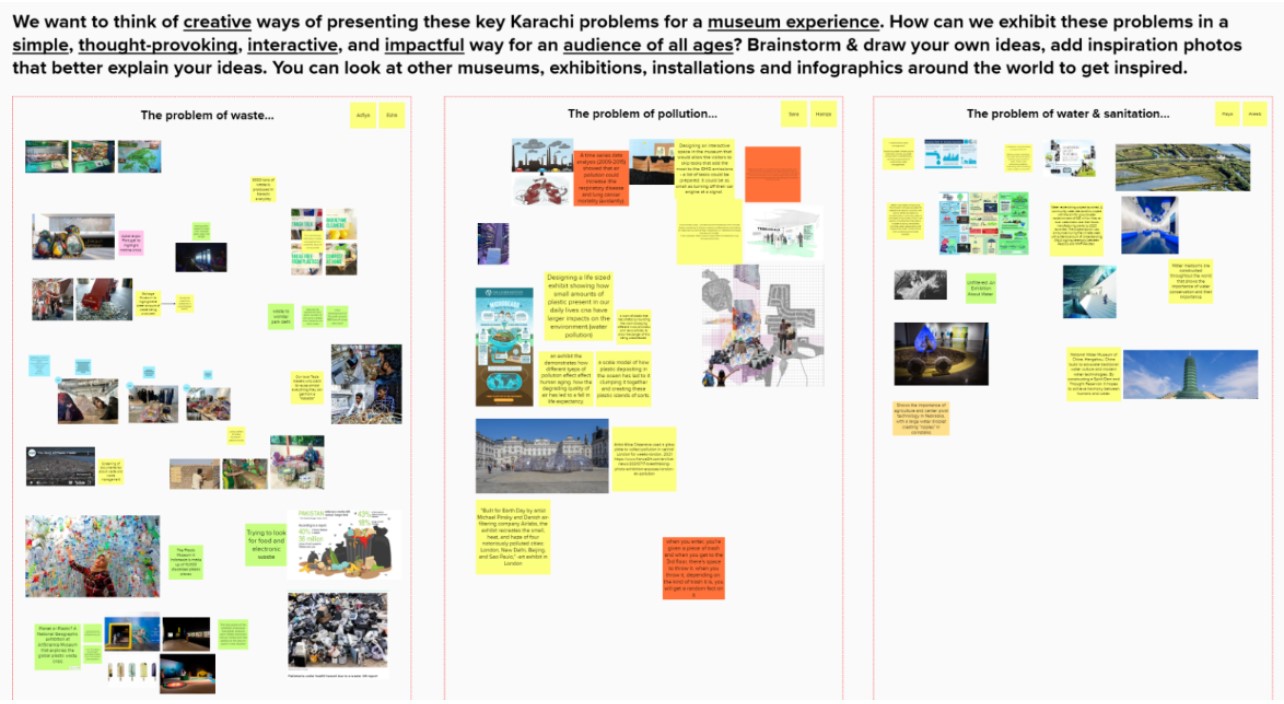 After receiving feedback on our initial ideas from the TDF MSC team, we collectively decided to focus on the theme of waste moving forward. This led us to carry out more specific research to understand how the problem of waste is presenting itself in Karachi, what the causes and effects are, and where our waste ends up. We then had to shortlist our exhibit ideas whilst considering the flow and narrative they would form, and how they would fit spatially in the floor plan and layout. We decided the ground floor would be problem focused, and the mezzanine level above would be solutions focused, showcasing the steps we can take towards designing a better future for waste in Karachi.
We had to make sure that our ideas were user-friendly in that they catered to a variety of ages and learning styles, whilst not being easy to break or taken away. Once we had a final flow of exhibits with all these considerations in mind, we contextualized each exhibit idea with relevant data and information to make them Karachi-centered. This was a process of constant convergence and divergence upon ideas and research.
After receiving feedback on our initial ideas from the TDF MSC team, we collectively decided to focus on the theme of waste moving forward. This led us to carry out more specific research to understand how the problem of waste is presenting itself in Karachi, what the causes and effects are, and where our waste ends up. We then had to shortlist our exhibit ideas whilst considering the flow and narrative they would form, and how they would fit spatially in the floor plan and layout. We decided the ground floor would be problem focused, and the mezzanine level above would be solutions focused, showcasing the steps we can take towards designing a better future for waste in Karachi.
We had to make sure that our ideas were user-friendly in that they catered to a variety of ages and learning styles, whilst not being easy to break or taken away. Once we had a final flow of exhibits with all these considerations in mind, we contextualized each exhibit idea with relevant data and information to make them Karachi-centered. This was a process of constant convergence and divergence upon ideas and research.
